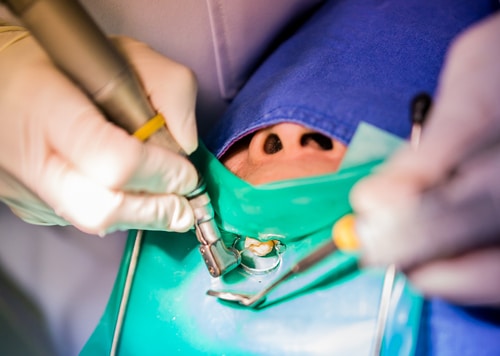Nerves are a common phenomenon when people visit the dentist. These fears can be a representation of your nerves, being unaware of what to expect, or prior trauma or negative experiences in the dentist’s office. Statistically, it is estimated that up to 75 percent of the United States population is fearful of the dentist. This can lead patients to feel anxiety, leading them to avoid visiting the dentist at all costs. When you don’t go to your regular dental appointments, you are putting yourself at risk for dental decay and oral disease. Dentists are capable of screening your mouth and determining if you are susceptible to any risks or risk factors that may lead to future problems. Instead of avoiding the dentist, opt for a sedation dentist. To learn more about what a sedation dentist is and how they operate, keep reading below for further information.
What is a Sedation Dentist?
A sedation dentist is a dentist who is qualified to distribute certain anesthesia in order to more successfully relax a patient. A common nickname for this line of work is called “sleep dentistry” because of how the allocated medicines create a soothing, relaxation effect. This coined term can lead to confusion, though, as sedation dentistry often does not put you to sleep.
Rather, sedation dentists offer an alternative to the stress and anxiety associated with visiting the dentist. When you arrive, you’ll be given a specified level of sedation depending on the type of procedure you may need. The different ranges include mild, moderate, deep, and general anesthesia. Only in general anesthesia are you fully unconscious. To achieve these different levels, various forms of sedation are used.
What Kinds of Sedation are Used?
Depending on the procedure you are visiting the sedation dentist for, they will use varying types of sedation. There are four common types of practices. The first type is inhaled minimal sedation. This is when you breathe in nitrous oxide, more familiar deemed “laughing gas”. This is the lightest form of sedation.
Next, oral sedation is used for more moderate procedures. Most times, you are given a pill which will make you either groggy or drowsy.
Third comes IV moderate sedation, where an intravenous tube floods your body with a particular sedative. These are best for issues that need immediate care, as the IV sedation works fast. The fourth and final sedation option is general anesthesia which renders you unconscious. These are best for long, potentially scary procedures. Keep in mind that with a majority of these options, you will still be administered local anesthetics to relieve any physical pain.
Is It Safe?
While sedation is typically safe for healthy individuals, it is important to consult with your doctor before deciding to receive any kind of sedation from any medical professional. Some people who are at higher risk when using sedation include those who are highly overweight or obese, and those who have issues with sleep apnea.
These are more harmful to them because they are more susceptible to airway issues during the procedure. Because anesthesia has the potential to harm some, it is important to remember to consult your doctor before receiving it. Remember, typically sedation dentistry is safe and there would be an anesthesiologist, keeping track of your vitals throughout the entire procedure. You have nothing to be afraid of!
Can You Visit Any Dentist for Sedation Dentistry?
Many dentists are qualified to perform minimal sedation to keep patients at ease. Higher than this level, though, sedation dentist must complete a program titled the Commission on Dental Accreditation which teaches dentists more complex techniques for administering anesthesia. If your dentist has completed this program, then you can fully expect to be in safe hands.
If you’re in search of a dentist with this certification, visit Inglewood Family Dental for the best oral care possible!
Like us on Facebook!


